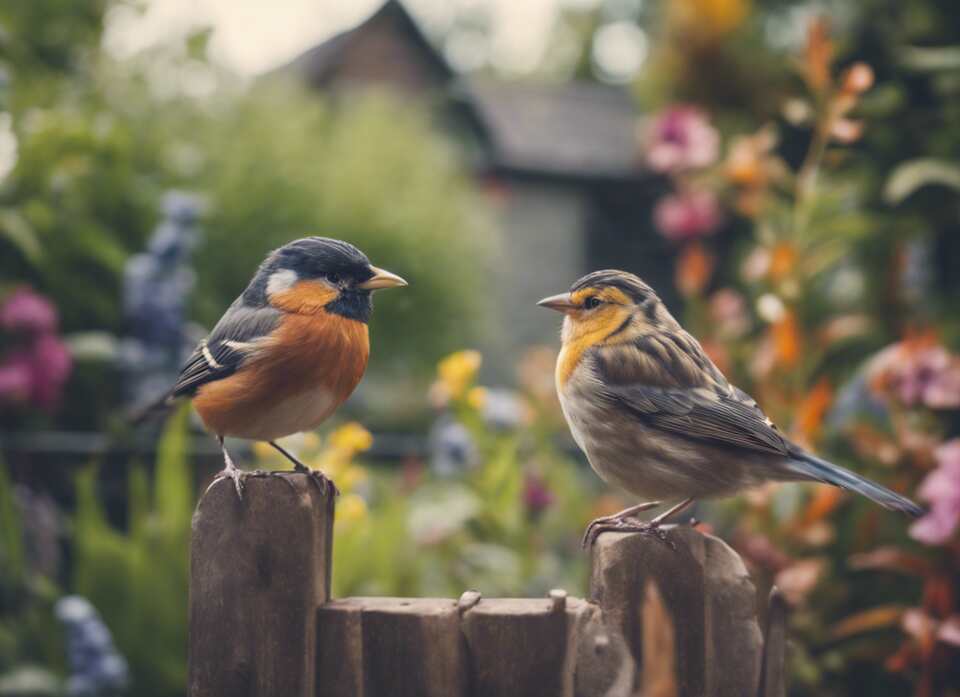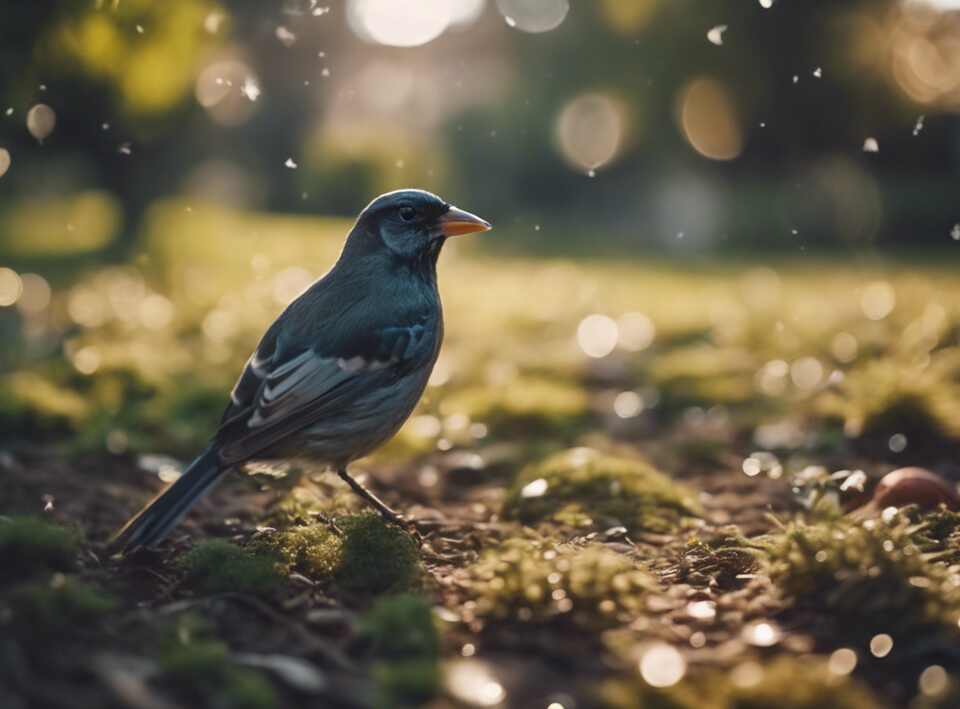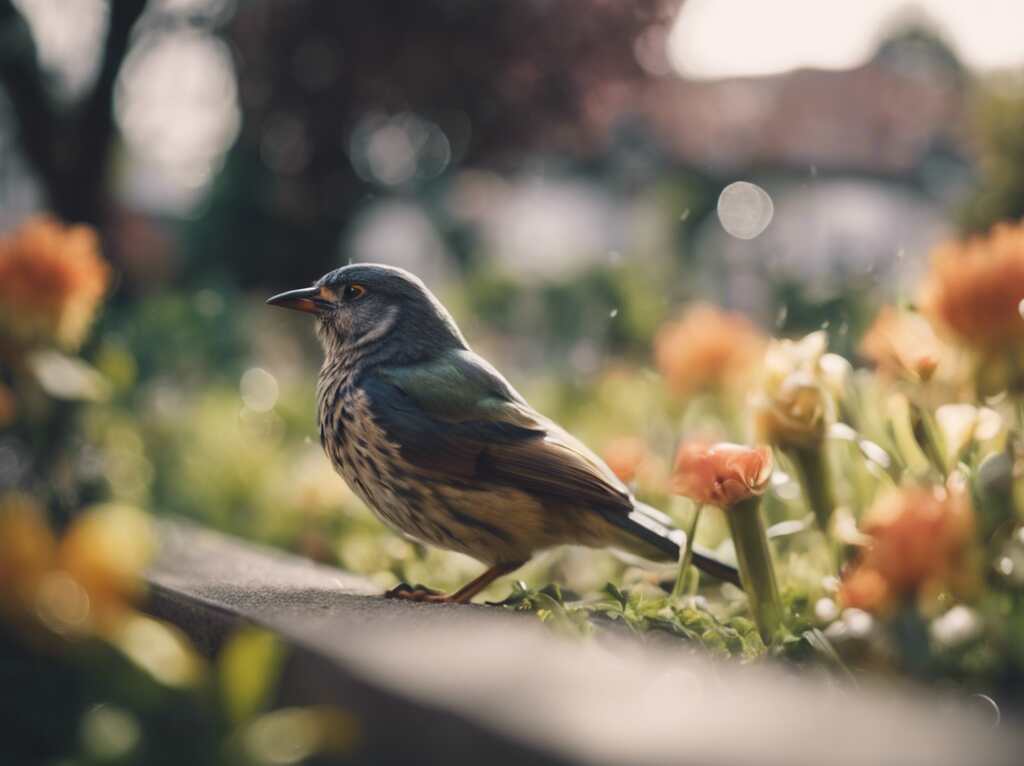Have you noticed a distinct lack of birds in your garden lately? It’s a common concern for many homeowners, as a vibrant, lively garden filled with the sights and sounds of birds can truly elevate the outdoor experience. But when the chirping and fluttering is suddenly absent, it can leave you wondering what’s gone wrong.
Table of Contents
Reasons Why You Might Not See Birds in Your Garden
There are several potential reasons why you might not be seeing as many birds in your garden as you’d like. Understanding these factors can help you take steps to create a more attractive and welcoming environment for our feathered friends.
Lack of Food Sources
One of the primary reasons birds may avoid your garden is a lack of readily available food sources. Birds rely on a variety of seeds, berries, insects, and other natural sustenance to survive and thrive. If your garden doesn’t offer a diverse array of plants that provide these essential food items, the birds are likely to search elsewhere for their meals.
To remedy this, consider incorporating more bird-friendly flora into your landscape. Plant a mix of native flowers, shrubs, and trees that produce seeds, fruits, and attract insects. This will create a steady supply of nourishment throughout the seasons, drawing birds in and encouraging them to stick around.
Insufficient Water
Just as important as food, birds need a reliable source of clean, fresh water in order to drink and bathe. If your garden is lacking in this department, it could be a major deterrent for local bird populations.
Strategically placed birdbaths, shallow dishes, or even a small, trickling fountain can go a long way in making your garden more enticing. Be sure to keep the water clean and replenished, as birds are less likely to visit dirty, stagnant water sources.
Lack of Cover and Shelter
Birds also require safe areas to nest, roost, and take refuge from predators and harsh weather conditions. If your garden lacks adequate shrubs, trees, or other forms of dense cover, the birds may feel exposed and vulnerable, opting to seek shelter elsewhere.
More vertical layers of vegetation, such as tall grasses, bushes, and mature trees, can provide the protective hiding spots and nesting sites that birds need. You can also install birdhouses of varying sizes to offer artificial shelter options.
Disturbances and Threats
Certain elements in your garden may be inadvertently scaring birds away or putting them at risk. This could include things like:
- Cats or other predators roaming the area
- Intense human activity and noise
- Bright exterior lighting at night
- Pesticide use that eliminates insect food sources
To make your garden a safer, more welcoming space, try to minimize these potential threats and disturbances as much as possible. Keep pets indoors, reduce nighttime lighting, and opt for natural, organic pest control methods.
Habitat Loss and Changes
On a broader scale, the overall decline in bird populations can also be a factor in your garden’s lack of avian activity. Widespread habitat destruction, climate change, and other environmental pressures have led to dramatic drops in many bird species over the years.
While you can’t single-handedly reverse these large-scale issues, creating a lush, bird-friendly oasis in your own backyard can still make a positive difference. By providing the essential resources and shelter that birds need, you’re doing your part to support local populations and promote biodiversity.
Bringing birds back to your garden takes patience and persistence, but the rewards are well worth the effort. By addressing the key factors that may be driving them away, you can transform your outdoor space into a vibrant, thriving haven that birds will be eager to call home.

Attracting Birds Back to Your Outdoor Space
Creating a Bird-Friendly Outdoor Oasis
As a nature enthusiast, you may have noticed the absence of birds in your once vibrant garden. The reasons behind this can vary, but with a few strategic changes, you can transform your outdoor space into a thriving bird haven. In this article, we’ll explore the key factors that can attract feathered friends back to your garden and help you create a truly bird-friendly environment.
Providing Ample Food Sources
One of the primary reasons birds may be scarce in your garden is a lack of accessible food sources. Birds rely on a variety of food options, from seeds and berries to insects and nectar. a diverse array of native plants that produce these essential nutrients can be a game-changer.
Start by planting a selection of native flowers, shrubs, and trees that offer a continuous supply of food throughout the seasons. Consider including plants like sunflowers, coneflowers, and serviceberries, which provide both seeds and berries. Additionally, consider setting up feeders that offer a variety of high-quality bird seed, suet, and even hummingbird nectar to supplement their dietary needs.
Providing Ample Water Sources
Access to clean, reliable water is another crucial factor in attracting birds to your garden. Birds need water for drinking, bathing, and maintaining their feathers. Install a birdbath or a shallow water feature, such as a small pond or a recirculating fountain, to give them a reliable source of water.
Ensure that the water feature is shallow, with gently sloping sides to allow easy access for birds of all sizes. Keep the water clean and refreshed regularly to prevent the buildup of algae or stagnation, which can deter birds from using it.
Creating Safe Havens
Birds also require safe, secure places to nest, roost, and take refuge from predators and harsh weather conditions. dense, multi-layered plantings with a mix of evergreen and deciduous species can provide the necessary cover and nesting sites.
Consider adding birdhouses or roosting boxes to your garden, strategically placed in areas that offer protection and seclusion. These man-made structures can be especially beneficial for cavity-nesting species, like bluebirds, chickadees, and wrens.
Minimizing Threats and Disturbances
It’s crucial to minimize potential threats and disturbances that may be keeping birds away from your garden. This includes reducing the use of pesticides and herbicides, which can be harmful to birds and their food sources. Additionally, consider installing bird-safe window treatments or applying decals to prevent window collisions.
Be mindful of your garden’s activity levels and try to create quiet, undisturbed areas where birds can feel safe and undisturbed. Avoid excessive noise, bright lights, and sudden movements that may startle and deter birds from visiting your outdoor space.
By addressing these key factors – providing food and water sources, creating safe havens, and minimizing threats – you can transform your garden into a thriving bird oasis. With patience and persistence, you’ll soon witness the return of vibrant, feathered visitors, adding color, song, and life to your outdoor sanctuary.

Conclusion
If you’ve noticed a distinct lack of feathered friends in your garden, don’t despair. Understanding the reasons behind their absence and taking steps to make your outdoor space more inviting can help bring these winged wonders back. By addressing the potential issues and implementing strategies to attract birds, you can transform your garden into a vibrant, bird-friendly oasis.
One of the primary reasons you might not be seeing birds in your garden is the lack of suitable food sources. Birds rely on a variety of natural foods, including seeds, berries, insects, and even small crustaceans. If your garden lacks the necessary plant life or feeders to provide these essential nutrients, birds may be drawn to greener pastures elsewhere. Ensuring a consistent supply of bird-friendly foods, such as high-quality bird seed, suet, and nectar, can be a game-changer in luring these feathered visitors back.
Another factor that can contribute to the absence of birds is the lack of suitable nesting sites. Birds need safe, sheltered areas to build their homes and raise their young. If your garden lacks dense vegetation, mature trees, or even birdhouses, it may not be providing the necessary nesting opportunities. Introducing a variety of native plants, installing birdhouses, and creating dense shrub layers can create the perfect habitat for birds to thrive.
In addition to food and shelter, birds also require access to clean, fresh water. If your garden lacks a reliable water source, such as a birdbath or small pond, birds may be inclined to seek out other areas that can fulfill this essential need. a water feature, whether it’s a simple birdbath or a more elaborate water garden, can be a significant draw for birds, providing them with a reliable source of hydration and bathing.
Disturbances and threats can also play a role in keeping birds away from your garden. If your outdoor space is frequently disrupted by human activity, pets, or predators, birds may perceive it as an unsafe environment and choose to avoid it altogether. Minimizing loud noises, providing safe perches and hiding spots, and keeping pets indoors can help create a more bird-friendly atmosphere.
The use of pesticides and herbicides in your garden can have a detrimental effect on the local bird population. These chemicals can contaminate the food sources, water, and nesting materials that birds rely on, ultimately making your garden less hospitable. Opting for organic gardening practices and avoiding the use of harmful chemicals can go a long way in creating a bird-friendly oasis.
By addressing these potential issues and taking proactive steps to make your garden more appealing to our feathered friends, you can help restore the vibrant bird life that once graced your outdoor space. Whether it’s adding bird feeders, planting native vegetation, or creating a water feature, each small change can contribute to the overall transformation of your garden into a true avian haven.
Remember, the return of birds to your garden is not only a delight to observe but also a testament to the healthy and balanced ecosystem you’ve helped to cultivate. As you witness the gradual reappearance of these winged wonders, take pride in the positive impact you’ve made, and continue to nurture your garden to become a sanctuary for birds and all of nature’s treasures.



